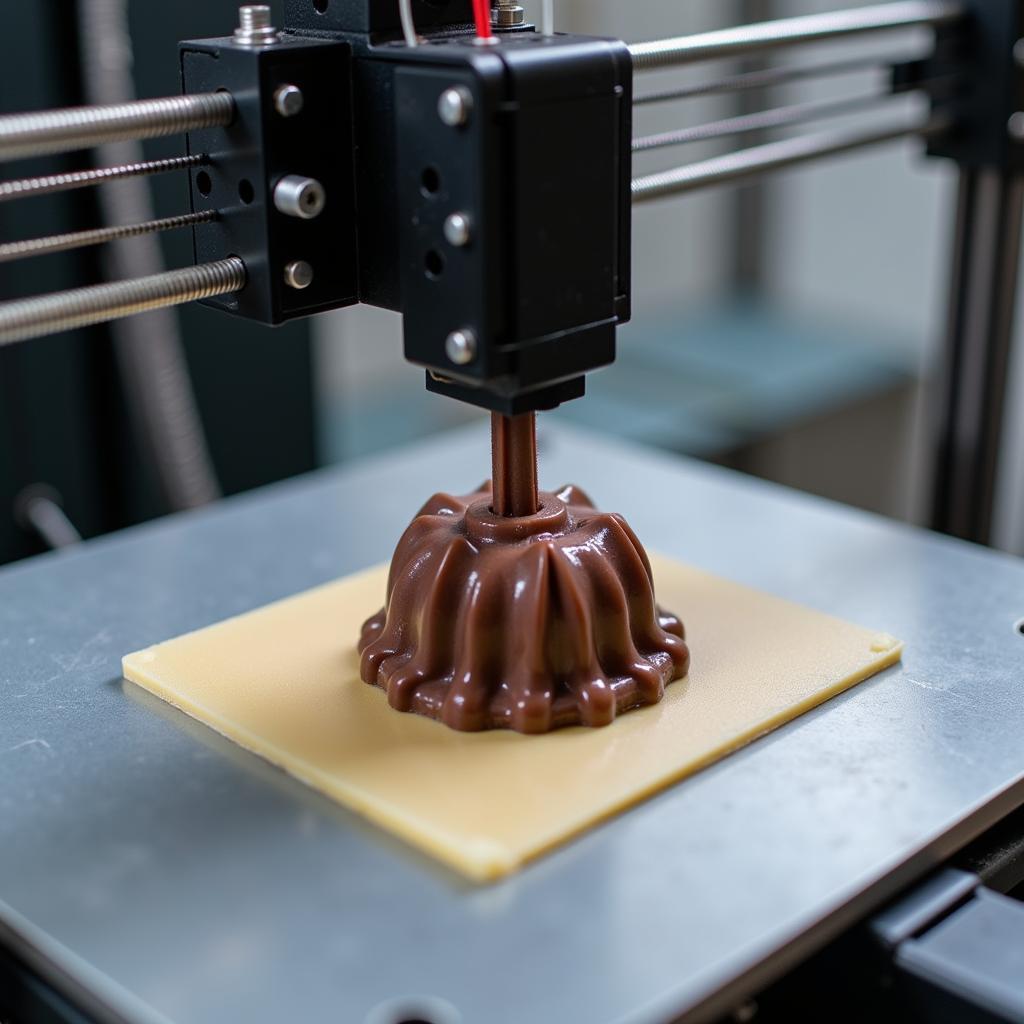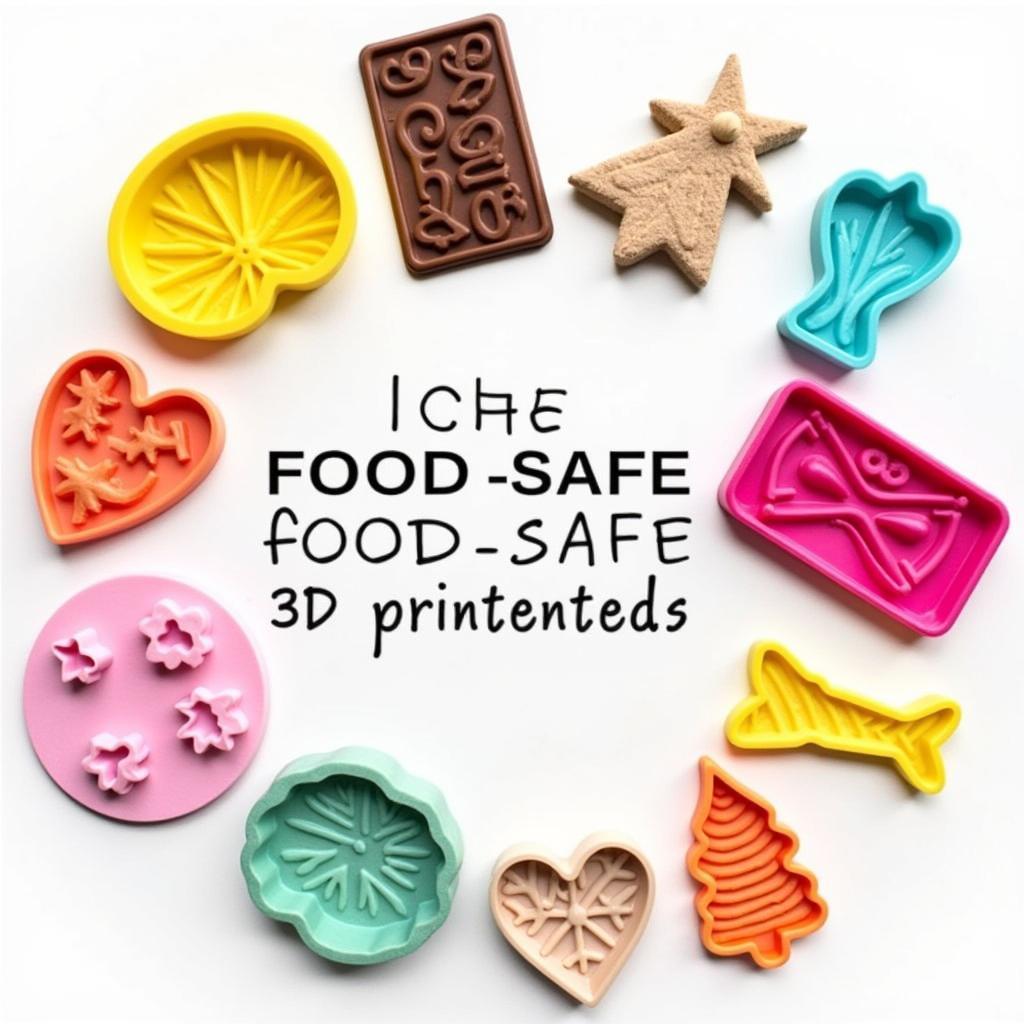3d Printer Food Safe Filament is revolutionizing how we interact with food, from creating customized molds to printing edible decorations. But with so many options on the market, navigating the world of food-safe 3D printing can feel overwhelming. This guide aims to demystify the topic, providing you with everything you need to know about choosing and using 3D printer food safe filament. Check out our selection of food grade 3d printing filament.
What Exactly is Food Safe 3D Printing Filament?
Food safe 3D printing filament refers to materials specifically designed for creating objects that come into contact with food. These filaments must meet stringent requirements to ensure they don’t leach harmful chemicals into the food. They often undergo rigorous testing and certification processes.
Key Properties of Food Safe Filaments
Choosing the right filament is crucial for safe and successful food printing. Look for filaments that are:
- FDA Approved: Ensure the filament complies with FDA regulations for food contact.
- BPA-Free: Bisphenol A (BPA) is a harmful chemical commonly found in plastics; opt for BPA-free options.
- Heat Resistant: The filament should withstand temperatures associated with food preparation and storage.
- Durable: It needs to be strong enough to hold its shape and resist cracking or breaking.
- Easy to Clean: A smooth, non-porous surface makes cleaning and sanitizing easier, preventing bacterial growth.
Popular Types of Food Safe 3D Printing Filament
Several types of food safe filaments are available, each with its own advantages and disadvantages:
- PETG: A common choice due to its durability, ease of printing, and relatively low cost.
- PLA: A plant-based option, PLA is biodegradable and often considered more environmentally friendly. However, it’s less heat-resistant than PETG.
- TPE: Flexible and durable, TPE is suitable for creating molds and other food-contact items.
How to Use Food Safe Filament for 3D Printing
Using food safe filament is similar to using standard filaments, but there are a few crucial considerations:
- Cleanliness: Ensure your 3D printer is thoroughly cleaned before and after use to prevent contamination.
- Temperature Control: Follow the manufacturer’s recommended printing temperature for optimal results.
- Post-Processing: Some filaments require post-processing, such as curing or annealing, to enhance their food safety.
 3D Printing with Food Safe Filament
3D Printing with Food Safe Filament
Is all 3D Printed Food Safe to Eat?
While food-safe filaments are designed for food contact, not everything printed with them is necessarily edible. The printed objects themselves are generally not meant for consumption. They are typically used for creating molds, cutters, or decorative elements that touch food.
What are the applications of 3D printer food safe filament?
You can use 3d print food safe filament for a wide range of culinary applications:
- Custom Chocolate Molds: Create unique and intricate chocolate designs.
- Cookie Cutters: Design personalized cookie cutters in any shape imaginable.
- Cake Decorations: Print edible decorations and toppers for cakes and pastries.
- Pasta Shapes: Experiment with custom pasta shapes and sizes.
“Food-safe 3D printing empowers chefs and home cooks to push the boundaries of culinary creativity,” says renowned pastry chef, Amelia Dubois. “The ability to create custom molds and tools opens up endless possibilities for artistic expression in the kitchen.”
 Food Safe 3D Printed Objects
Food Safe 3D Printed Objects
Conclusion
3D printer food safe filament offers exciting possibilities for culinary innovation. By understanding the different types of filaments, their properties, and best practices for use, you can safely and effectively incorporate this technology into your kitchen. Explore the potential of 3d printer food safe filament and elevate your culinary creations.
FAQ
- Is PLA filament food safe? While PLA is derived from plant-based sources, it’s not inherently food-safe. Look for specifically labeled “food-safe PLA.”
- Can I wash food-safe 3D prints in the dishwasher? Some food-safe filaments are dishwasher safe, but always check the manufacturer’s recommendations.
- What is the shelf life of food-safe 3D printed objects? The shelf life depends on the material and storage conditions.
Common Scenarios
- Scenario 1: You want to make custom chocolate molds for a special occasion.
- Scenario 2: You need to create a unique cookie cutter for a themed party.
- Scenario 3: You’re looking for a way to personalize cake decorations.
Further Exploration
Explore other articles on our website related to food-grade filaments and 3D printing techniques for food applications.
Contact Us
For any assistance, please contact us at Phone: 02437655121, Email: minacones@gmail.com, or visit our address: 3PGH+8R9, ĐT70A, thôn Trung, Bắc Từ Liêm, Hà Nội, Việt Nam. We have a 24/7 customer service team.